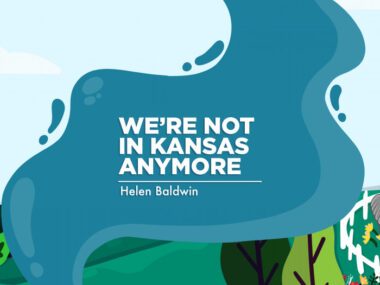How being prepared became more than a Girl Scout motto
Nothing could've readied this columnist for her late son's diagnosis
Written by |

Starting with Brownies in second grade, my stint in the Girl Scouts lasted five years. The Girl Scouts’ motto is “Be prepared.”
As the firstborn, Taurus child of teacher parents, that came easy for me. Growing up, I tended to be generally organized and responsible — a dream student. I prepared well for most school projects and practiced for piano recitals and duo piano performances with my mother until others in my family begged for mercy. I wasn’t immune to “wing it” moments on numerous occasions, though they always stressed me out. (Interestingly, I often seem to function better under pressure now.)
My predilection for preparedness continued after college and during my employment at a medical clinic. When my husband, Randy, and I both decided to return to school for teacher certification, I stepped up my game even more. Before seeking certification in special education, I spent a year as a substitute teacher in special ed classes, mostly in self-contained schools. I strived to be the one teachers and principals called first when the need for a substitute arose. I was summoned daily.
“Be prepared.” I was … until I wasn’t.
Trading preparedness for spontaneity
In the summer of 1985, Randy and I left our native Fort Worth, Texas, for Columbia, South Carolina, where Randy had accepted a prime coaching position. I landed a job teaching kindergartners at a self-contained school for students with orthopedic and other severe health conditions.
My first five years at Brockman School were challenging but fun. Then came my sixth and final year. Every child in my class had profound health conditions, including blindness, deafness, seizures, tracheotomies, and more. My crash course in skilled nursing commenced the moment the buses pulled up on the first day. While I was used to making classroom adaptations on the fly, it seemed like every moment of every day functioned on the fly.
The dramatic shift in my classroom duties signaled the beginning of the end of preparedness I’d experienced in most facets of my life. I just didn’t know it yet.
A surprise and then panic
Randy and I moved to the North Carolina mountains at the end of 1995. In the spring of 1997, our third baby arrived. Jeffrey, a surprise, was beautiful, exceptionally easy to parent, and absolutely adored.
Randy worried about Jeffrey’s abdominal breathing at birth; however, as no medical person expressed concern at the time, neither did I. I did notice in the following weeks that his crying and coughing were unusually weak and he didn’t nurse long without falling asleep. He also didn’t squirm much (or at all, as I later observed). He did smile a lot, though!
Eight weeks later, my physician brother, Paul, examined Jeffrey at Randy’s request. He found a dull-sounding lung and no reflexes.
Unable to sleep that night, my “be prepared” self jotted down notes for whatever doctor would see us in a few hours. I noted the above observations. In addition, Jeffrey wasn’t making any attempt to hold his head up, and his chest wasn’t developing. I was shocked at how much I’d obviously observed and appalled that I hadn’t been duly alarmed. The more I wrote, the more frantic I became.
And then panic hit. One of our dogs had died from hit-and-run injuries a week before, affording me an opportunity to discuss heaven, death, and God with our older children, Matthew and Katie. Might that have been preparation — a rehearsal — for what was coming up with Jeffrey?
Being prepared after the diagnosis
Jeffrey was diagnosed the following evening with SMA type 1. The official report would take several weeks, but the pediatric neurologist felt confident in his assessment. He described the progression of the leading genetic killer of children under 2 by saying that the muscles controlling movement, sucking, swallowing, and breathing would eventually stop functioning until patients “usually just go to sleep.” It’s usually peaceful, he added.
Jeffrey probably would have only a few years to live. I was too busy sobbing to respond.
Randy and I returned home after the horrendous genetic testing and researched alternative treatments on the internet. I connected with fellow SMA families in various stages of their respective assignments. My head spun fast and my heart spun faster in our surreal new reality.
Spontaneity quickly became the norm, as it had been my final year at Brockman. Jeffrey seemed fine one minute and required suctioning the next. As our assignment progressed, his breathing shifted from stable to erratic and then back again. Morphine was initially a miracle drug, but then its effectiveness plunged to nil. I prayed for God to spare Jeffrey until I prayed for God to take him.
On a crisp November night, Jeffrey’s eyes begged for a farewell. I’d never dreamed that “be prepared” would one day mean giving permission for my child to join the angels, but I was, and I did.
Jeffrey was prepared, too. It took just two breaths.
He would’ve made a great Scout.
Note: SMA News Today is strictly a news and information website about the disease. It does not provide medical advice, diagnosis, or treatment. This content is not intended to be a substitute for professional medical advice, diagnosis, or treatment. Always seek the advice of your physician or other qualified health provider with any questions you may have regarding a medical condition. Never disregard professional medical advice or delay in seeking it because of something you have read on this website. The opinions expressed in this column are not those of SMA News Today or its parent company, Bionews, and are intended to spark discussion about issues pertaining to spinal muscular atrophy.








Leave a comment
Fill in the required fields to post. Your email address will not be published.